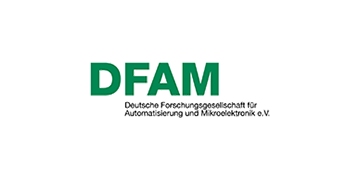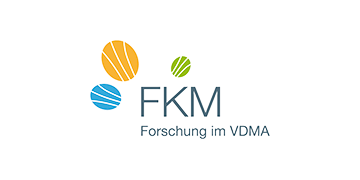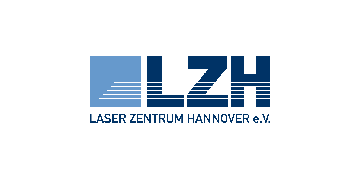| Theme | Industry 4.0 |
|---|---|
| Project title | Integrated optical absolute-value encoder and torque analyser (IntegrAD) |
| Project duration | 01.05.2014 – 31.12.2016 |
| Download | |
| Press release |
- Sorry, no events available.
Vergangene Termine gefunden
- 25.09.2014
- VDMA-Haus, Lyoner Straße 18, 60528 Frankfurt am Main
- 21.10.2014
- LZH – Laser Zentrum Hannover e.V., Hollerithallee 8, 30419 Hannover
- 01.04.2015
- IPH – Institut für Integrierte Produktion Hannover gGmbH, Hollerithallee 6, 30419 Hannover
- 22.04.2015
- VDMA-Haus, Lyoner Straße 18, 60528 Frankfurt am Main
- 16.07.2015
- HAWK Göttingen, Von-Ossietzky-Straße 99, 37085 Göttingen
- 23.09.2015
- VDMA-Haus, Lyoner Straße 18, 60528 Frankfurt am Main
- 20.10.2015
- Brabender GmbH & Co. KG, Kulturstraße 51-55, 47055 Duisburg
- 21.06.2016
- IPH – Institut für Integrierte Produktion Hannover gGmbH, Hollerithallee 6, 30419 Hannover
- 14.12.2016
- IPH – Institut für Integrierte Produktion Hannover gGmbH, Hollerithallee 6, 30419 Hannover
Publications about the project
Absolutely measuring angle of rotation and measuring torque are of great importance in industry. So far, the acquisition of both variables is done separately. Within the scope of this thesis, a non-contact measurement method for the determination of the absolute rotation angle and torque is investigated. In order to detect the torque of a mechanical shaft contactless, two coded markings in the circumferential direction and corresponding distance are applied with a laser, which are red by means of an optical system. Both markings encode the absolute angle of rotation within 360°, so that when the two angles of rotation are detected, an angle difference and thus torque are inferred. Further development of existing codings as well as the detectability of the absolute rotation angles and the torque calculated therefrom are described in this work. In addition, the detection of the circularity and the effect of this on the angle measurement in the context of the scientific question is examined. For this purpose, both the model presentation and experimental measurement results are described in the work. The simultaneous detection of the circularity offers the possibility of determining the angle-dependent change in distance, so that an application in condition-based maintenance (e.g. of bearings) is conceivable. Furthermore, preliminary considerations for industrial applicability are included in order to enable a compact design and further optimize data processing. In experiments with an engine test bench, the implemented prototypical measuring system is investigated and discussed in industrial practice. At a speed of 500 min-1, the general feasibility of optical torque measurement was demonstrated with an error of up to 11 %.
optical torque measuring system, rotation angle, coding, circularity, angle difference method
Black marking as micrometer scaled binary coding applied on shafts by ultrashort pulsed lasers with high contrast and without ablation as a non-contact sensor system for combined measurement of angular position and torque.
laser materials processing, sensors, absorption, image analysis
The measurement of the absolute rotational angle and torque via sensors forms the basis for many industrial sectors. Until now, combined sensors have not been available, so that a lot of installation space is occupied by sensor setups. In addition, the sensor setups get expensive quickly. Therefore, an optical and non-contact measurement method to detect the absolute angle of rotation and torque was developed. This paper presents the validation methodology, the setup of the test bench and the validation results. With an angular resolution of 0.001 degree and an accuracy of more than 0.05 percent, the results are promising. However, for industrial application further investigations on determining torque and miniaturizing the optical setup are required.
absolute angular position, angle difference, sensor, torque
The measurement of torque via sensors as well as the generation of torque form the basis of many industrial sectors. Within a research project an optical and non-contact measurement method to detect the absolute rotation angle and torque was developed. For comparison with the current state of the art torque sensors a test stand was built and compared to a reference torque sensor. The results of this validation are presented in the present paper.
torque, rotation angle, optical, validation
A combined measurement method for the optical determination of the absolute rotational angle and torque was realized. Absolute codings of the angle as well as proper production technologies for the production of suitable markings on the shaft were investigated and successfully implemented.
The absolute rotational angle could be measured with a resolution of about 0.001° at an accuracy of better than 0.2° (corresponds to 0.05% f. s.). Torque was determined with an accuracy of about 3% f. s..
The conclusion is that the overall aim was achieved.
optical measurement, torque, absolute angle of rotation
In this article, image processing of a binary single track code for determining torque is presented. The aim of the research is to determine the absolute angular position of a shaft and the applied torque. For capturing an image of the binary code two independent imaging modules are used, both allowing for measuring the angular position and rotational speed. Combining both imaging modules, torque can be determined. Position markings are directly applied on the shaft using a laser to ensure a simple integration of the system into any application. The selected technological approach is based on a contactless measurement method using angle differences. The concept of image processing as well as first research results are presented for determining the angular position twice and, thus, the torque applied to the shaft.
image processing, single track code, torque
In this article, a combined contactless measurement method is presented which is based on angle differences. The aim is the development of a combined, optical measurement system to determine the angular position of a shaft and the applied torque on it as well as an appropriate production technology to apply markings. Two independent modules are used which separately allow the measurement of angular position and rotational speed and if combined can measure torque. To ensure a simple integration of the system into any application, position markings are directly applied on the shaft using a laser. The selected technological approach is based on a contactless measurement method using angle differences. The concept as well as first research results are presented.
absolute angular position, angle difference, contactless combined measurement, sensor, torque
The concept of angular difference allows simultaneous measurement of the relative and absolute rotation angle as well as the torque. The torsion of a shaft resulting from torque gets determined via the difference of two angles and converted into correlating torque. Today’s measuring devices use encoder disks or additional torque shafts. An incremental or absolute structure of measurement of the encoder disks is applied to it. Torque shafts are used frequently to extend the twist angle as a result of torsion. Current methods of measurement for rotation angle and torque are described.
torque, torsion, rotation angle
The concept of angular difference allows simultaneous measurement of the relative and absolute rotation angle as well as the torque. The torsion of a shaft resulting from torque gets determined via the difference of two angles and converted into correlating torque. Today’s measuring devices use encoder disks or additional torque shafts. An incremental or absolute structure of measurement of the encoder disks is applied to it. Torque shafts are used frequently to extend the twist angle as a result of torsion. Current methods of measurement for rotation angle and torque are described.
concept of angular difference, rotation angle, torque











